
Panama Hat Soup
4. Cooking the Straw
|
Simón brings the tallos into the kitchen where a pot of water is already boiling over a wood fire. (Right) He is using a steel rod to balance the pot from falling into the fire hole. One good bump could bring about a calamity. |
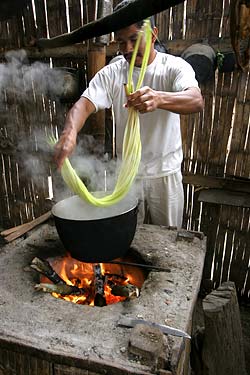
|
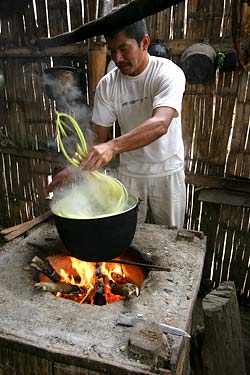
|
He lowers the tallo carefully into the water, curling it to fit the pot, like extra-extra-long spaghetti. |
|
Simón swirls the long tallo to spread it evenly and to keep his hand out of the hot steam as much as possible. |
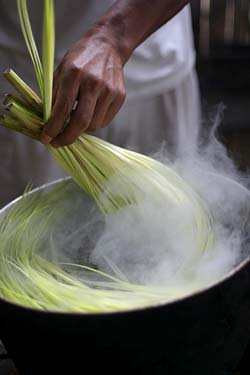
|
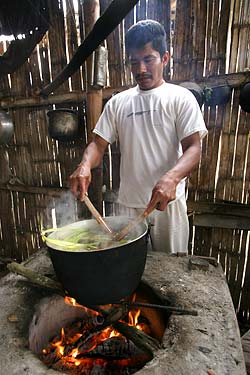
|
He uses the sticks to keep the tallo submerged, to stir the pot, to separate the strands so they don’t stick. |
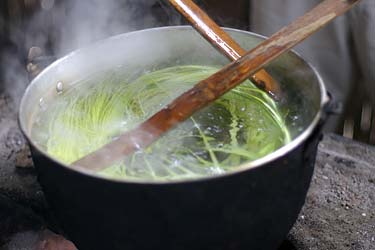
It really is a lot like cooking spaghetti. Though I seriously doubt that Simón has ever in his life cooked spaghetti. |
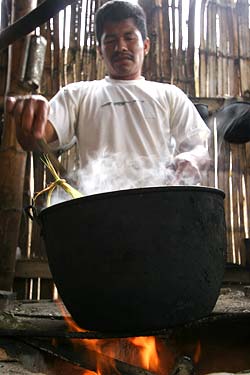
|
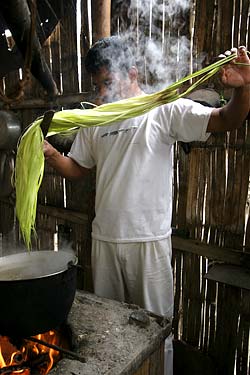
|
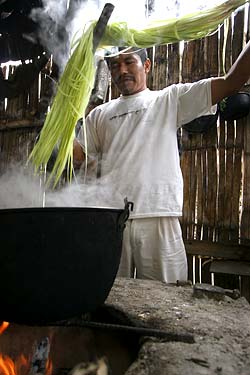
|
|
After about a minute, Simón hoists the tallo out of the water. |
|
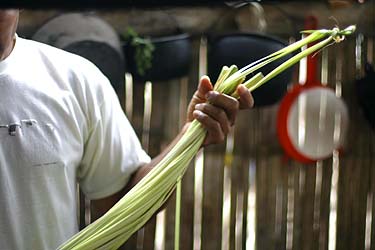
When all the tallos have been properly cooked, Simón takes them outside to dry. |
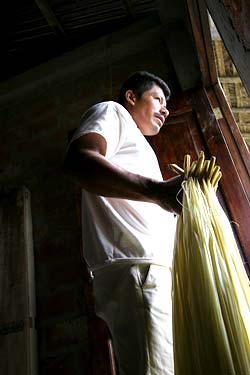
|
|
Yes, he hangs them on a clothesline to dry. The day was overcast, so it was safe to hang them out front under the eave of the corrugated tin roof. (Right) Below: Different straw, different day, but notice the open area below the house back past the pig. 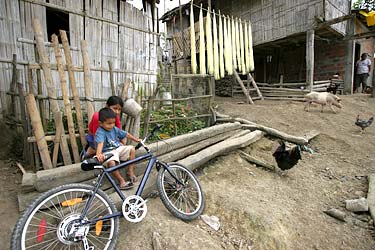
|
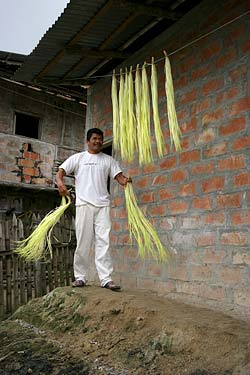
|
|
On sunny days, the drying straw needs shade for protection. Many of the village houses are on “stilts,” open underneath to invite ventilation in the equatorial heat. Straw is often hung beneath the houses. |
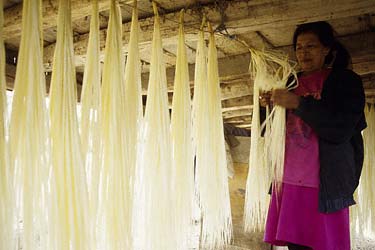
|
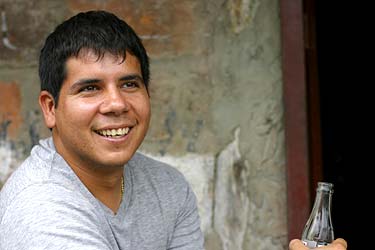
|
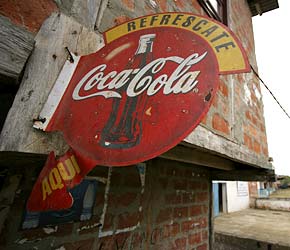
|
|
We went for refreshments while the straw dried. That’s Diego. He knows every young, attractive, single woman in Manta. “It’s a small town,” he says. Population 350,000. |
|
|
Next, see how the straw is bleached with sulfur. NEXT PAGE |
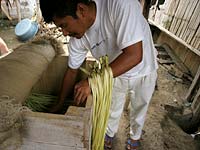
|
5. Bleaching the Straw go to
Text and photos © 1988-2025, B. Brent Black. All rights reserved.
100% Secure Shopping



















































